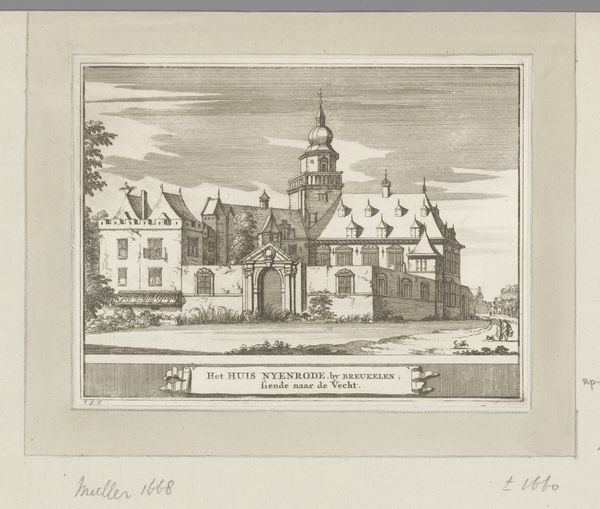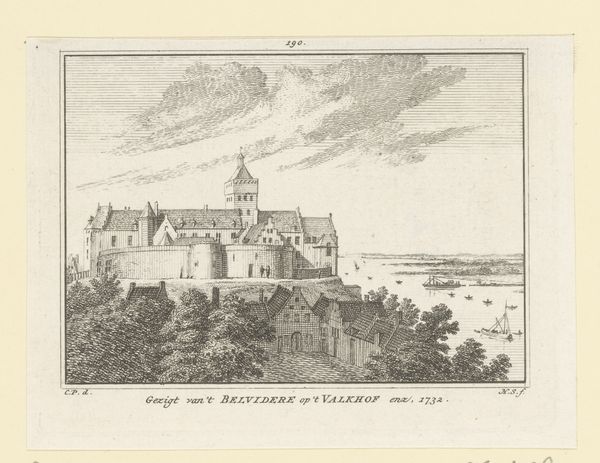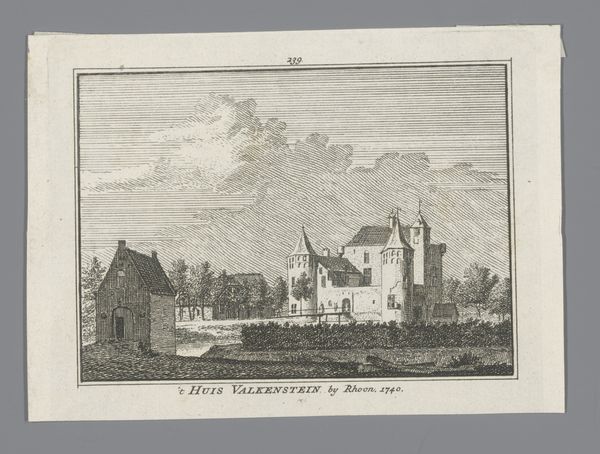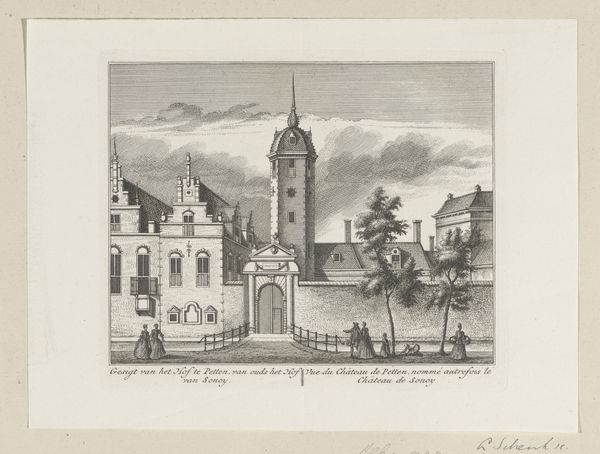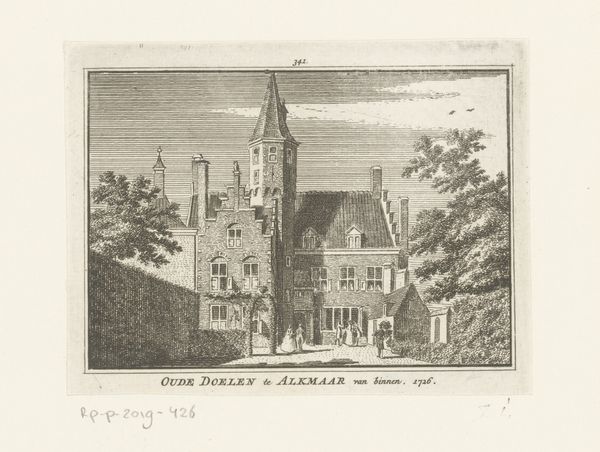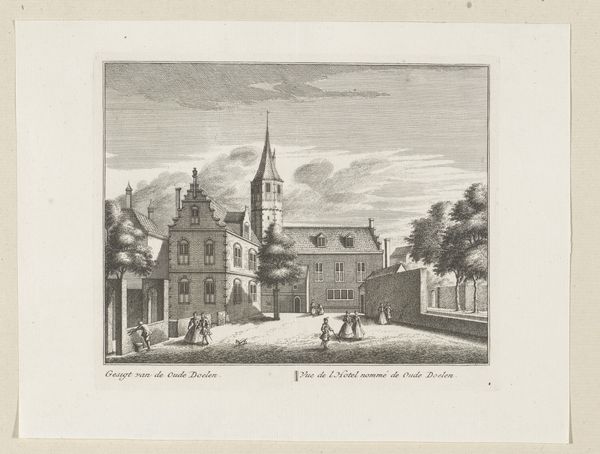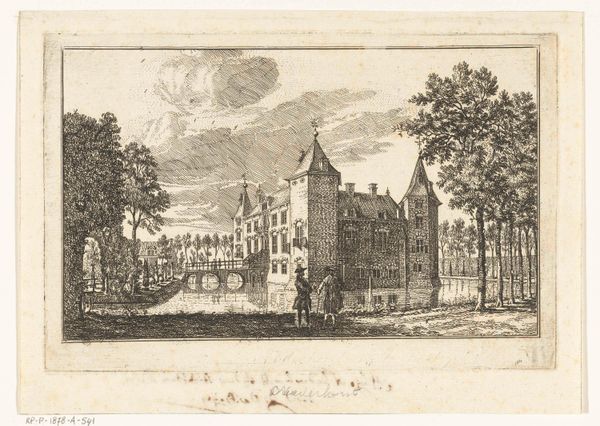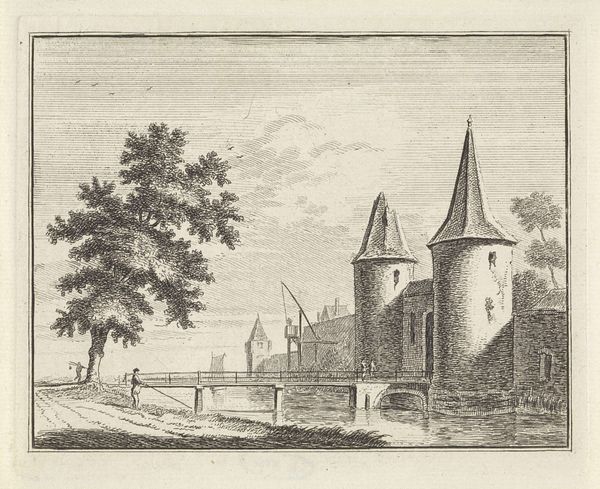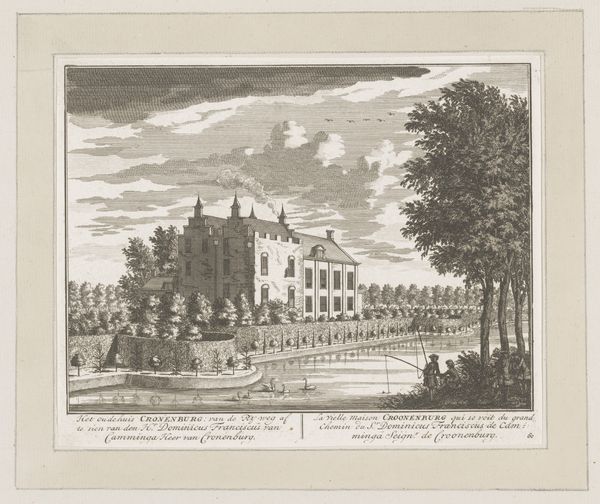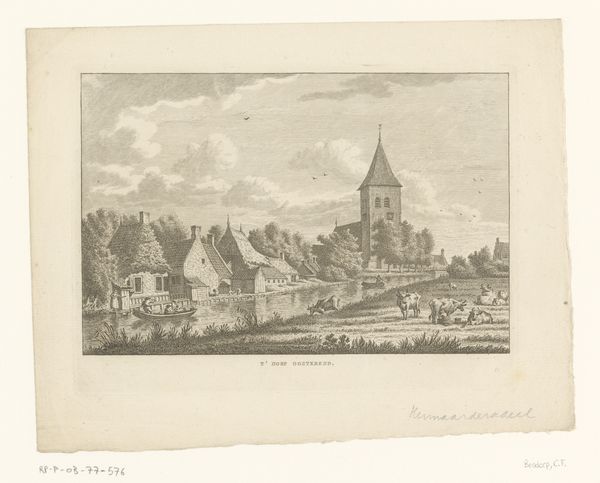
print, engraving
# print
#
landscape
#
cityscape
#
engraving
Dimensions: height 87 mm, width 105 mm
Copyright: Rijks Museum: Open Domain
Editor: Here we have "Gezicht op Kasteel de Kinkelenburg," an engraving by Simon Fokke, made sometime between 1745 and 1792. It depicts a castle, quite imposing, surrounded by water. There’s a figure fishing in the foreground. What stands out to you about this image? Curator: What interests me is how this print engages with the ideal of Dutch identity. This wasn't simply a neutral recording of a building; it was an active participation in constructing a shared sense of history and place. Editor: How so? Was the Kinkelenburg particularly significant? Curator: In the 18th century, there was growing interest in the local landscape, a yearning to define the 'Dutch' character through imagery. Prints like this helped popularize specific locales, turning them into national symbols, so this print functioned within a broader system of image production shaping national sentiment. Think of how the publishing industry commercialized and promoted these ideas. Editor: So, beyond being just a pretty picture, it's actively building Dutch identity? Curator: Precisely! It makes you think about how art at this time started defining Dutch cultural heritage. The composition isn’t accidental; framing the castle as the dominant, almost idealized structure plays into the historical narrative, and how the artist has selected a perfect composition. Editor: That really changes my perspective. I initially just saw a landscape. Curator: That's the power of looking beyond the immediate image to consider the social forces at play.
Comments
No comments
Be the first to comment and join the conversation on the ultimate creative platform.
